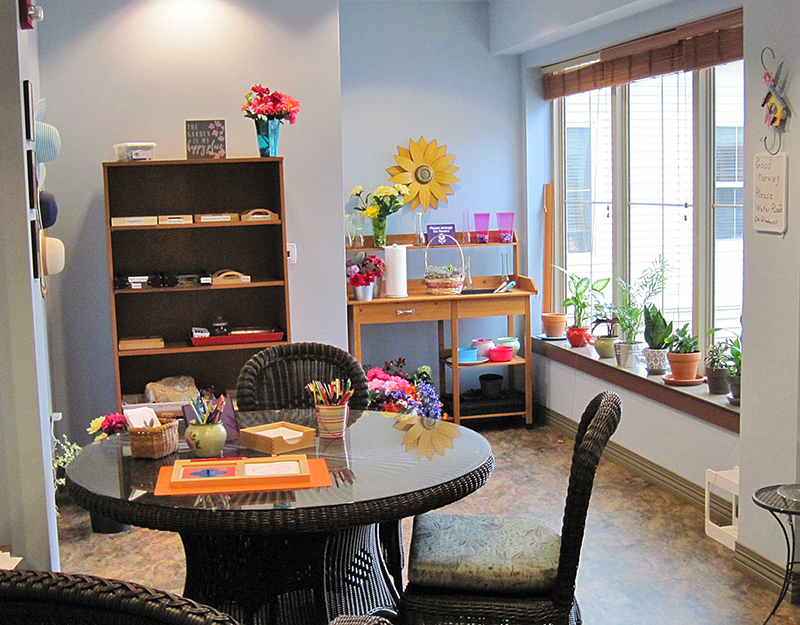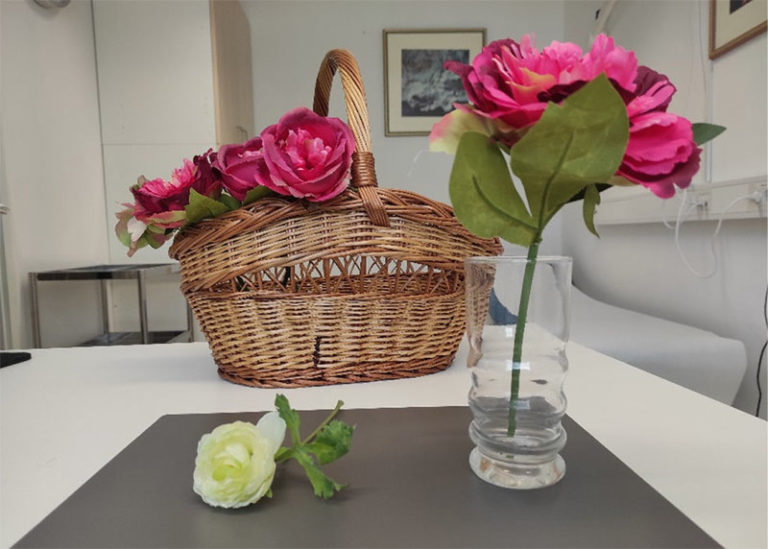“But, we can’t leave materials out in our community – the residents will take things back to their room!”
Photo © Lutheran Senior Life, Passavant Community
In a Montessori community for older adults, a wide range of interesting materials are available on accessible shelves and tables from which individuals can choose. If someone feels like sorting fishing lures, sewing a button, or listening to music, they are free to follow their desire and pick what interests them. Individuals are encouraged to work on an activity for as long as they would like. The materials in the environment are representative of the group’s interests and cognitive abilities.
This idea often makes staff in long term care communities nervous when they first learn about it.
“You mean everything is out all of the time? You don’t put it away and then bring it to them? Everyone in our community would take things into their rooms. This is never going to work!”
I hear this at every single workshop I teach. It can work. It works because we follow the needs of the person. We observe and we listen. We ask questions like, ‘Why do you think that Edna wants to take the cards back to her room?”
Let me explain. When we are working with a community to implement a Montessori philosophy, we begin with baby steps. Its not like an HGTV show where our team works all night long to create a brand-new environment that is revealed to the residents in the morning! Typically, staff create new Montessori engagement plans for two to three elders at a time. We collect a thorough life history, then collaborate with the elder to identify two or three activities and one community role the person would enjoy. Next, we meet with the elder every day, demonstrating the new activities and roles, and giving them the chance to try them. Once the elder understands the procedure, we know they enjoy it, and we identify any environment supports they need to make participation easier, we put those materials in the environment for them. Each week we give more demonstrations to more people and introduce more materials into the environment.
We observe and we notice if individuals are showing an interest in certain materials and if they are taking them to their rooms. We ask ourselves, “What is the need that the elder is trying to satisfy?” and brainstorm ways to meet that need. We create an engagement plan specific to that person that includes opportunities to explore, manipulate, and use materials in and out of their room. We observe frequently and continue to tweak the engagement plan, adding new activities and materials that support the person in well-being.
“But what if elders rearrange the shelves overnight and I don’t have time to straighten them in the morning?” This is another question I often hear. Let’s ask ourselves the same question. “What is the need that the elder is trying to satisfy?” and brainstorm how to meet that need. Would that elder like to be invited to take on the role of librarian and help organize the books each day? Or would an elder enjoy being invited to assist in preparing the shelves each morning? Visual cues, such as photos of the correct set-up of the shelves, can be provided to support elders with these tasks. Montessori trained care partners can ask themselves, “Is whatever I’m doing right now something that an elder could be doing with or instead of me?”
Instead of locking away the materials or removing them because someone takes them to their room or rearranges them when we’re not there, we ask ourselves, “How can we support this person to achieve well-being?” And isn’t that what we all want?




